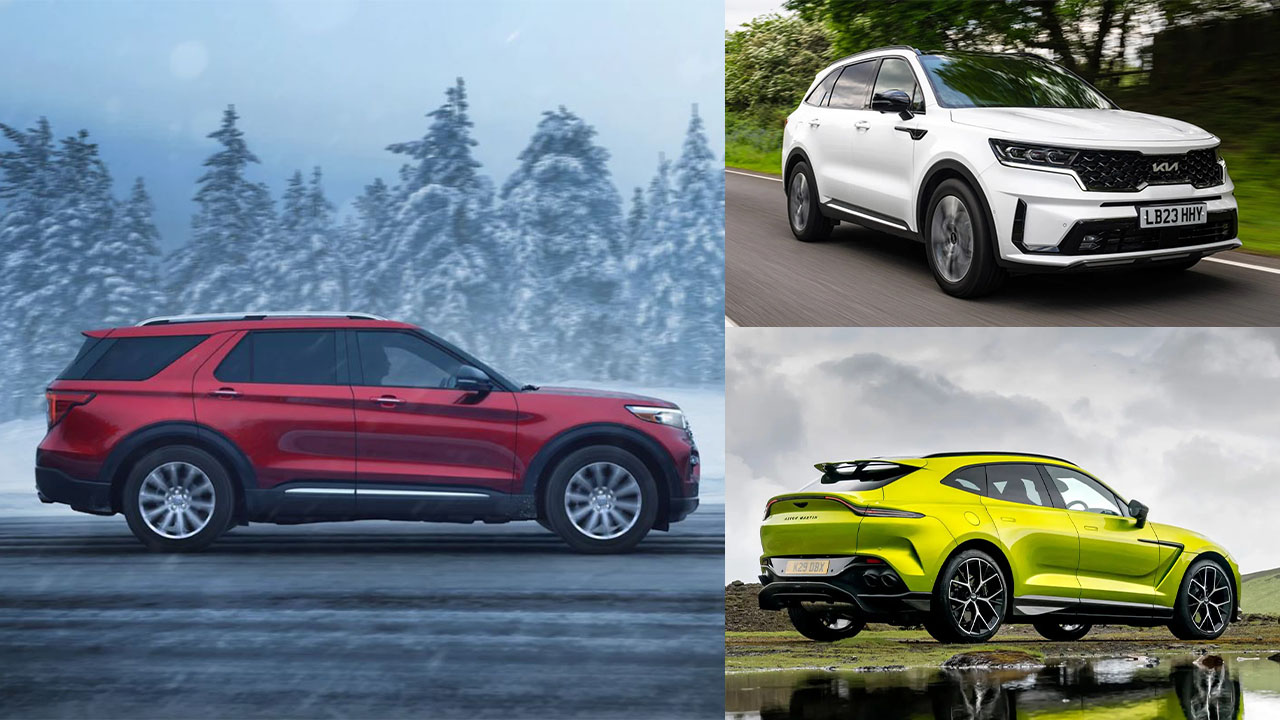SUVs have evolved significantly from their past reputation as slow, cumbersome vehicles. Thanks to advancements in powertrain technology and an increased focus on on-road performance, the fastest SUVs today can rival supercars in terms of acceleration.
This shift in design and engineering has led even brands like Ferrari and Lamborghini to enter the market, intensifying the competition for the title of the fastest SUV.
However, such impressive speed does come with a hefty price tag. These high-performance SUVs are produced by manufacturers with a rich heritage in luxury and performance, such as Aston Martin and Porsche, and their pricing reflects that.
Nonetheless, the rise of electrification has shifted the landscape, bringing supercar-level acceleration to a new generation of electric SUVs.
While these electric models may not boast the prestigious badges of Ferrari or Lamborghini, some can achieve similar acceleration on a clear stretch of road without the hefty six-figure price tag.
Despite these advancements, physics still presents challenges. SUVs remain large and heavy, and many have aerodynamics that could be compared to a garden shed.
Yet, with enough power, even a vehicle with less-than-ideal aerodynamic properties can deliver speed that competes with supercars. Just don’t ask about fuel economy especially if you’re constantly putting your foot down in an electric model.
Also Read: 5 Cars With Best Ride Comfort and 5 That Rattle Everywhere
Fastest SUVs
Below, we’ve compiled a list of the fastest SUVs available today, ranked by their acceleration from 0 to 62mph (or in some cases, 60mph).
Acceleration is often a more telling measure of performance in everyday driving, as top speeds are frequently electronically limited. So, get ready – here are the world’s fastest SUVs.
1. Tesla Model X Plaid
0-60mph: 2.5 seconds
Top speed: 163mph
The Tesla Model X is renowned for its blistering acceleration, a feat well-documented online through numerous videos showing the all-electric SUV outpacing some of the fastest supercars in drag races.
The standout model in terms of speed is the Plaid, which can hit 60mph in a mere 2.5 seconds. However, frequent bursts of this kind of performance will rapidly deplete the Model X’s impressive 333-mile range, much faster than the cars you leave in the dust behind you.
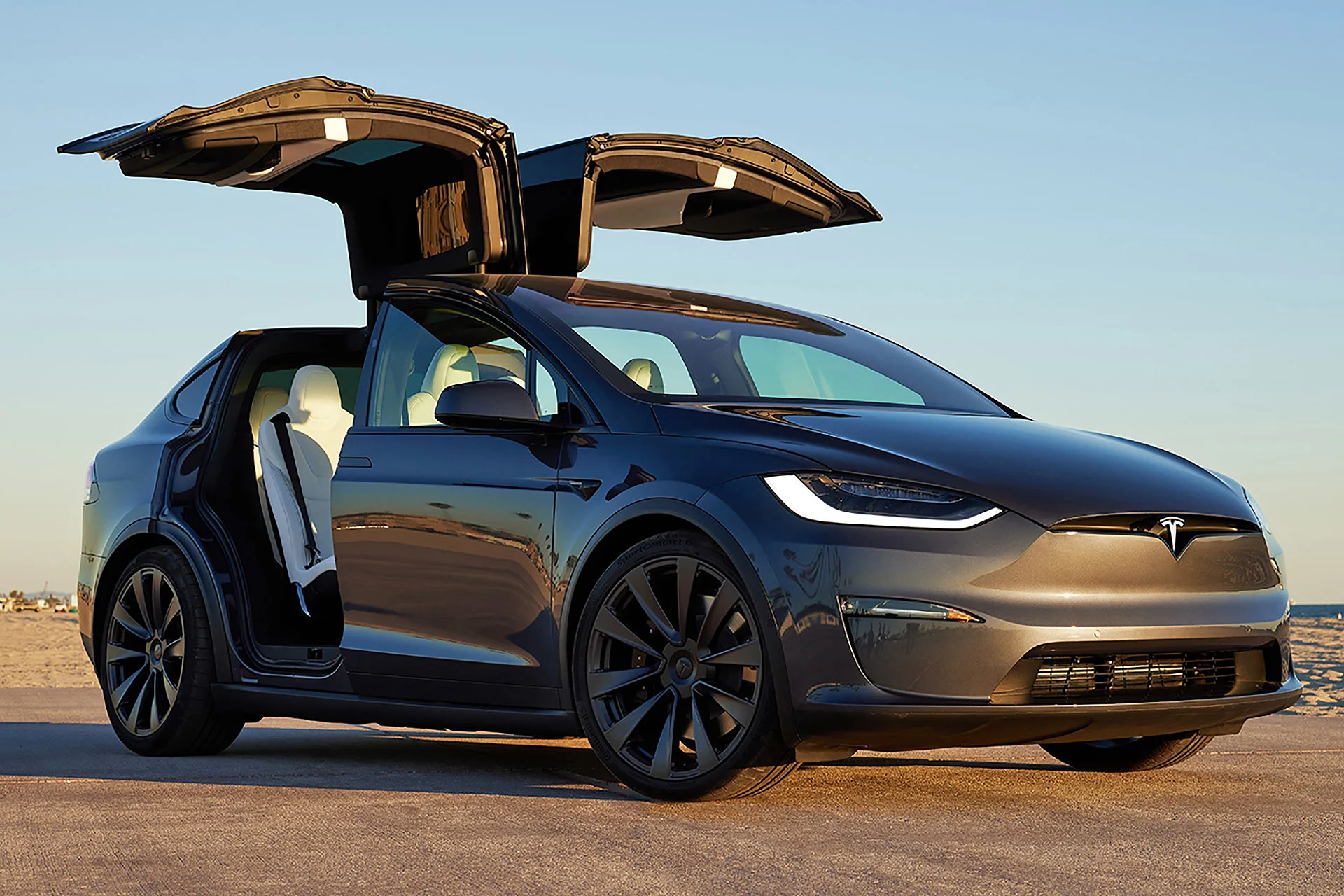
What makes this performance even more remarkable is that the Model X offers seating for seven passengers and can cruise along highways with almost complete silence.
While it may not carry the same glamorous appeal as vehicles like the Purosangue or the Urus Performante, the sheer speed and practicality of the Model X make it hard to ignore.
Tesla doesn’t follow the conventional carmaker’s annual update schedule and often makes revisions to its vehicles and pricing throughout the year.
As a result, while we don’t have all the details for the 2025 Model S, significant changes are not expected. If any updates are made, this page will be updated accordingly with the latest information.
The 2025 Tesla Model S starts at $81,630, and depending on the trim and options, the price can rise to $96,630. For most buyers, we’d recommend sticking with the standard Model S (previously the Long Range model), which offers an estimated range of 402 miles per charge.
While the ultra-high-performance Plaid model sounds appealing, its higher starting price offers diminishing value, with a range of just 359 miles. Unless you specifically need a car that performs like a Top Fuel dragster, the base model, with its 670-hp engine and additional range, should be sufficient.
The Model S offers full-time all-wheel drive with electric motors powering both the front and rear axles, and its acceleration ranges from outstanding to almost unbelievable. While the standard Model S proved itself as an agile sports sedan early on, other competitors have surpassed its ride and handling over time.
The car offers two different steering settings, allowing the driver to choose between heavy or light steering effort, though neither option provides better feedback from the road.
One notable feature is the available aircraft-style yoke steering wheel, which can make hand-over-hand maneuvering difficult, especially in tight spaces. However, a regular steering wheel is available at no additional cost, and it’s recommended to opt for this.
Despite these minor drawbacks, the Model S remains a solid daily driver, offering a comfortable ride and a quiet, serene experience on the highway, thanks to its silent electric powertrain.
Also Read: Top 10 High-Performance Automatic Cars of 2025
2. Lotus Eletre R
0-62mph: 2.9 seconds
Top speed: 165mph
When Colin Chapman founded Lotus in 1952, the idea of a massive electric SUV was probably the last thing on his mind. However, the Eletre R has emerged as a highly capable vehicle, making a commendable effort to live up to the renowned sports car legacy of the brand.
There will undoubtedly be discussions about whether the Eletre R stays true to Lotus’s original philosophy of “simplify, then add lightness.”
But one thing is certain: with 893bhp and 985Nm of torque at its disposal not to mention its impressive sub-three-second 0-62mph acceleration the power of this electric vehicle is unquestionable.
Lotus, a British company traditionally known for producing low-volume, lightweight, high-performance sports cars, is stepping away from its long-established marketing strategy with the introduction of a completely new model, the Eletre.
Unlike any Lotus before it, the Eletre is a high-performance electric SUV, manufactured in China, and is set to be available in the U.S. by the end of 2024.
Although the Eletre is considerably heavier than any previous Lotus model, due to its large battery pack, it still offers strong acceleration, thanks to its electric motors, which generate at least 603 horsepower.
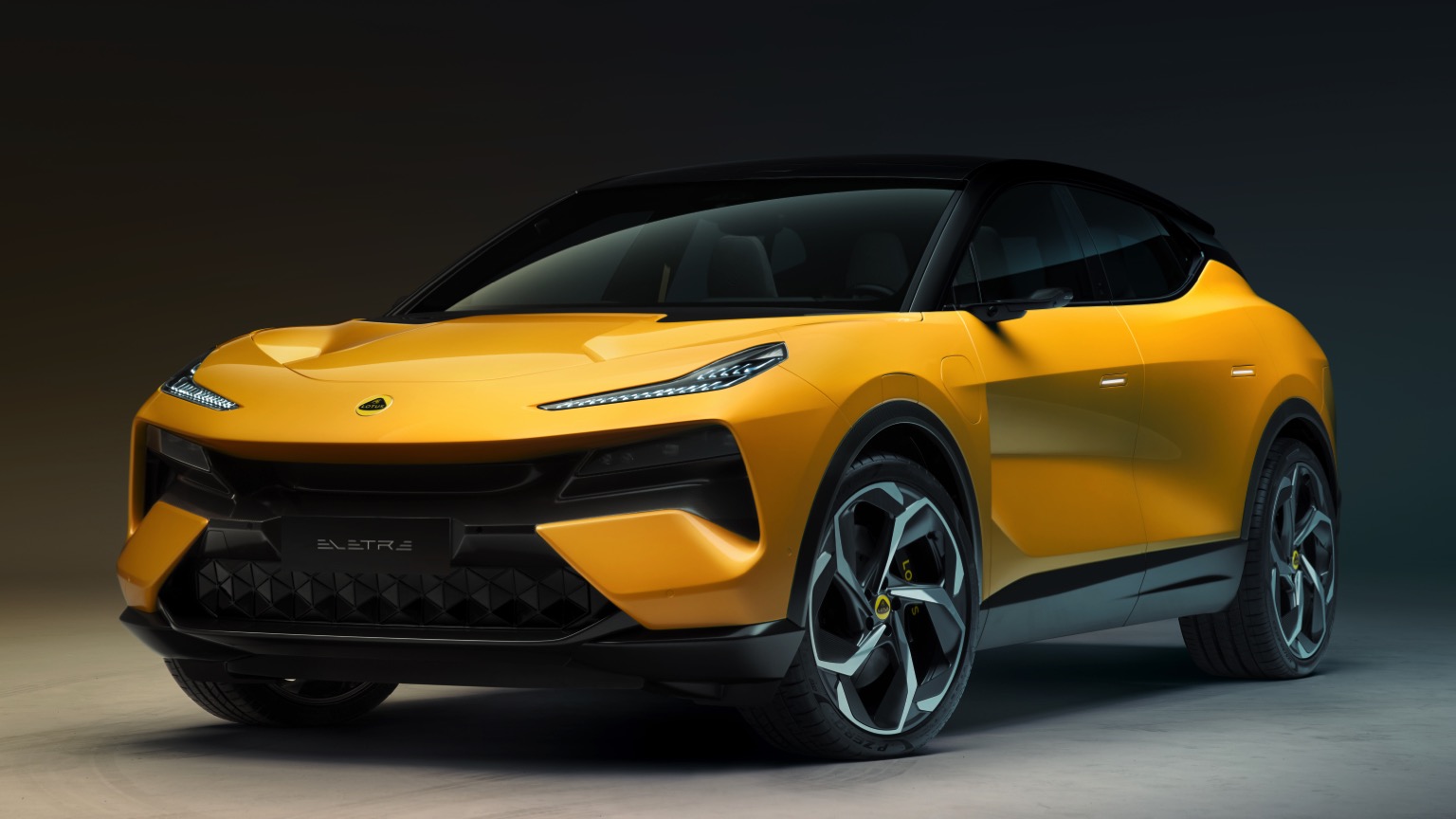
Lotus intends to compete with other electric SUVs such as the Audi e-tron and the BMW iX, but the Eletre bears a striking resemblance to the impressive Lamborghini Urus.
The Eletre is currently ranked #6 in the list of Best Electric Mid-Size Luxury SUVs, following models like the BMW iX, Lucid Motors Gravity, and Cadillac Lyriq.
The 2025 Lotus Eletre is the company’s first SUV and a major addition to the Lotus lineup. Pricing for the 2025 Eletre starts at $145,000 and can go up to $229,900, depending on the trim and options.
The Eletre R, which offers up to 905 horsepower, is the top model for 2025 and, for now, the only available version.
Future models will include a base version and a mid-range S trim, which will have less horsepower but a longer driving range. The Eletre’s base powertrain features a dual-motor all-wheel-drive setup, producing 603 horsepower.
Initial impressions of the vehicle indicate it is a performance SUV that is quick and comfortable, although it does not possess the agility of Lotus’s sports cars. The Eletre R, the highest-performing model available in 2025, delivers an impressive 905 horsepower.
This version stands out with dramatic performance on the road, although it exhibited some unsettling squirms and twitches when pushed hard with the throttle. Once the Eletre is tested in more controlled conditions, more detailed driving impressions and test results will be provided.
The Eletre’s acceleration is also noteworthy, with the 603-hp version expected to reach 60 mph in approximately 4.2 seconds. The more powerful Eletre R trim should achieve a zero-to-60-mph time of around 2.7 seconds.
A 109.0-kWh battery pack is expected to offer around 315 miles of driving range in the base and S trims, although the high-performance Eletre R will have a range of about 260 miles per charge.
Once the vehicle undergoes testing, a real-world evaluation will be conducted to assess its highway fuel economy and driving range. The EPA has not yet released official fuel economy estimates for the Eletre, and testing will be done as soon as the vehicle is available to provide more specific data on its efficiency.
3. Rivian R1S
0-62mph: 3.0 seconds
Top speed: 125mph
While Tesla has become a household name, Rivian might be less familiar, yet it stands as a prominent electric SUV competitor in the US market.
Beneath the Rivian R1S, you’ll find a powerful quad-motor setup that generates an astonishing 1,011bhp and 1,624Nm of torque.
Although the R1S’s top speed is electronically capped at 125mph, its acceleration remains its most impressive feature. Unfortunately, the Rivian R1S is not currently available in the UK.
As a three-row SUV counterpart to the R1T pickup, the Rivian R1S shares the same core strengths: impressive acceleration, a strong driving range, solid off-road capabilities, a comfortable interior, and distinctive exterior styling.
Much like its pickup sibling, the R1S also benefits from a full suite of hardware updates for the 2025 model year, with Rivian even labeling the 2025 R1S a “second-generation” model. However, it appears to be more of an incremental update, akin to an “R1S.2.”
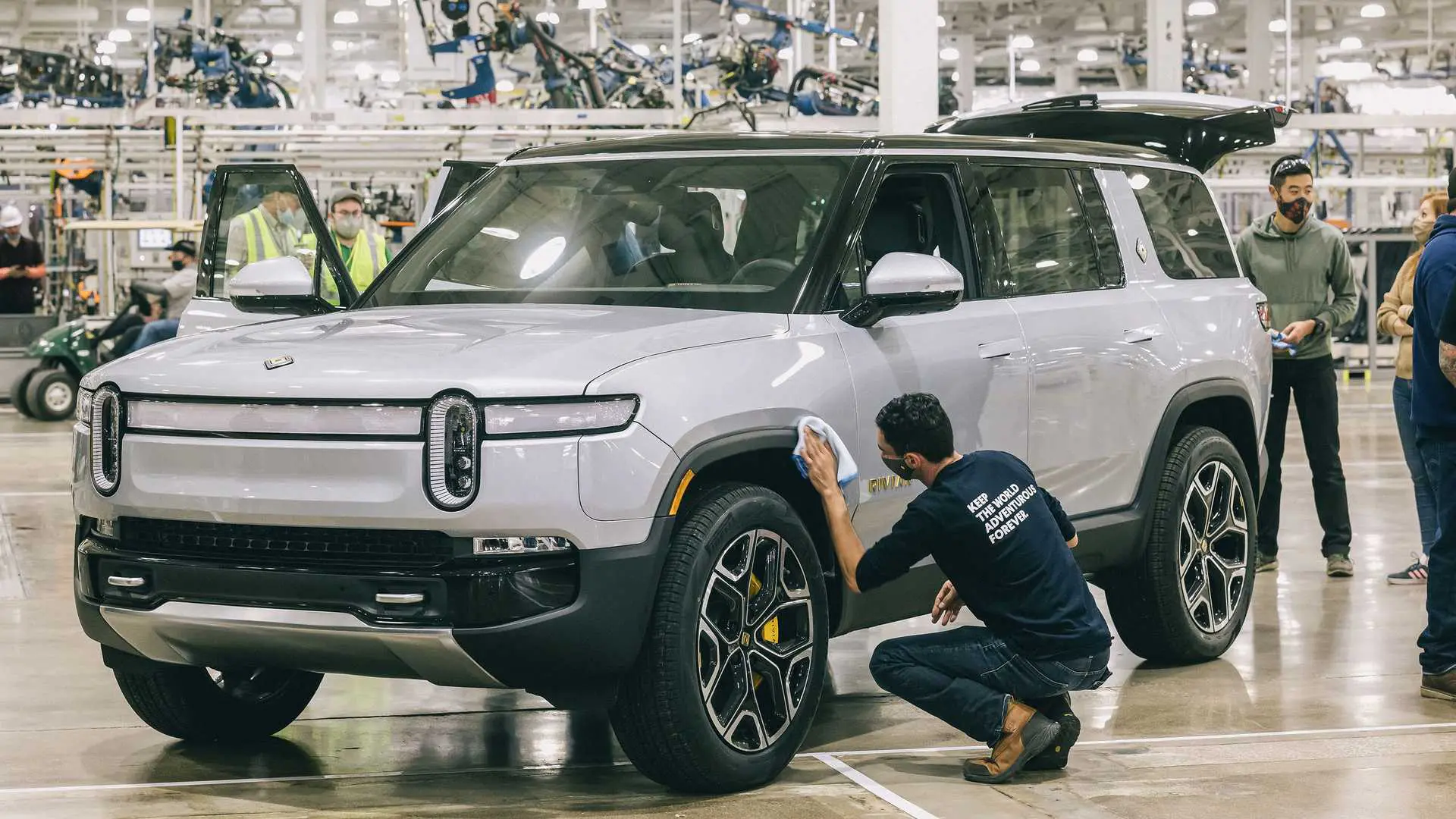
Among the updates is revised suspension tuning aimed at improving the R1S’s previously erratic road manners, along with a new 850-horsepower Tri-Motor powertrain that fills the gap between the standard Two-Motor and the top-tier Quad-Motor versions.
The latter now boasts a whopping 1,050 horsepower. The R1S’s off-road performance is enhanced by a standard air suspension that provides 15 inches of ground clearance. The longest-range version is capable of achieving up to 410 miles on a single charge, minimizing the need for frequent stops.
While the R1S continues to deliver on its mission of providing upscale comfort for up to seven passengers and their gear, its competitive landscape has shifted.
The R1S now faces increased competition from more affordable, three-row electric SUVs like the Kia EV9, the upcoming Hyundai Ioniq 7, and the similarly priced Volvo EX90.
For 2025, Rivian has equipped the R1S with an all-new electrical architecture, which is said to reduce the vehicle’s weight by over 44 pounds by removing excess wiring. The standard battery is now a lithium-iron-phosphate design, and the models with the larger and Max battery options have received range updates.
Rivian has also introduced newly designed motors for the Tri-Motor and Quad-Motor configurations, while the Dual-Motor models continue to use motors that were already designed in-house. Additional updates include new 20- and 22-inch wheel designs, a refreshed user interface with new graphics, and improved driving-assistance features.
Rivian’s new Connect+ subscription service brings GoogleCast streaming video and access to Apple Music, although there is still no Apple CarPlay or Android Auto compatibility.
The R1S also gets updated headlamps with a technology called “Adaptive Drive Beam,” designed to maintain optimal visibility without dazzling oncoming drivers; this feature is expected to be available in late 2024 via a software update.
Lastly, Rivian has introduced the California Dune Edition trim, a special version of both the R1S and R1T that comes with a desert-inspired paint job and standard off-road gear.
4. Aston Martin DBX707
0-62mph: 3.3 seconds
Top speed: 193mph
Aston Martin markets the DBX707 as the “fastest luxury SUV in the world.” While Tesla’s interpretation of luxury may differ from that of Aston Martin, there is no denying that the DBX707 is an extraordinarily impressive vehicle.
The standard DBX features a 4.0-litre twin-turbo V8 engine sourced from Mercedes-AMG, and in the DBX707, this engine is tuned to an incredible 697bhp.
To accommodate the additional torque a hefty 900Nm Aston Martin has equipped the DBX707 with a new transmission, featuring a wet clutch system, and has further fine-tuned the suspension for sharper, more dynamic handling.
The DBX marked Aston Martin’s first-ever SUV in over 100 years of history, and more significantly, it represented the brand’s move to gain a foothold in key global markets such as China, the Middle East, and the USA.
These markets are deeply rooted in the concept of “Big Vehicle Status,” which makes the introduction of such a vehicle crucial for the company’s future growth.
Additionally, the DBX was an attempt to create a truly practical, everyday Aston Martin, a concept that wasn’t fully realized in the four-door Rapide.
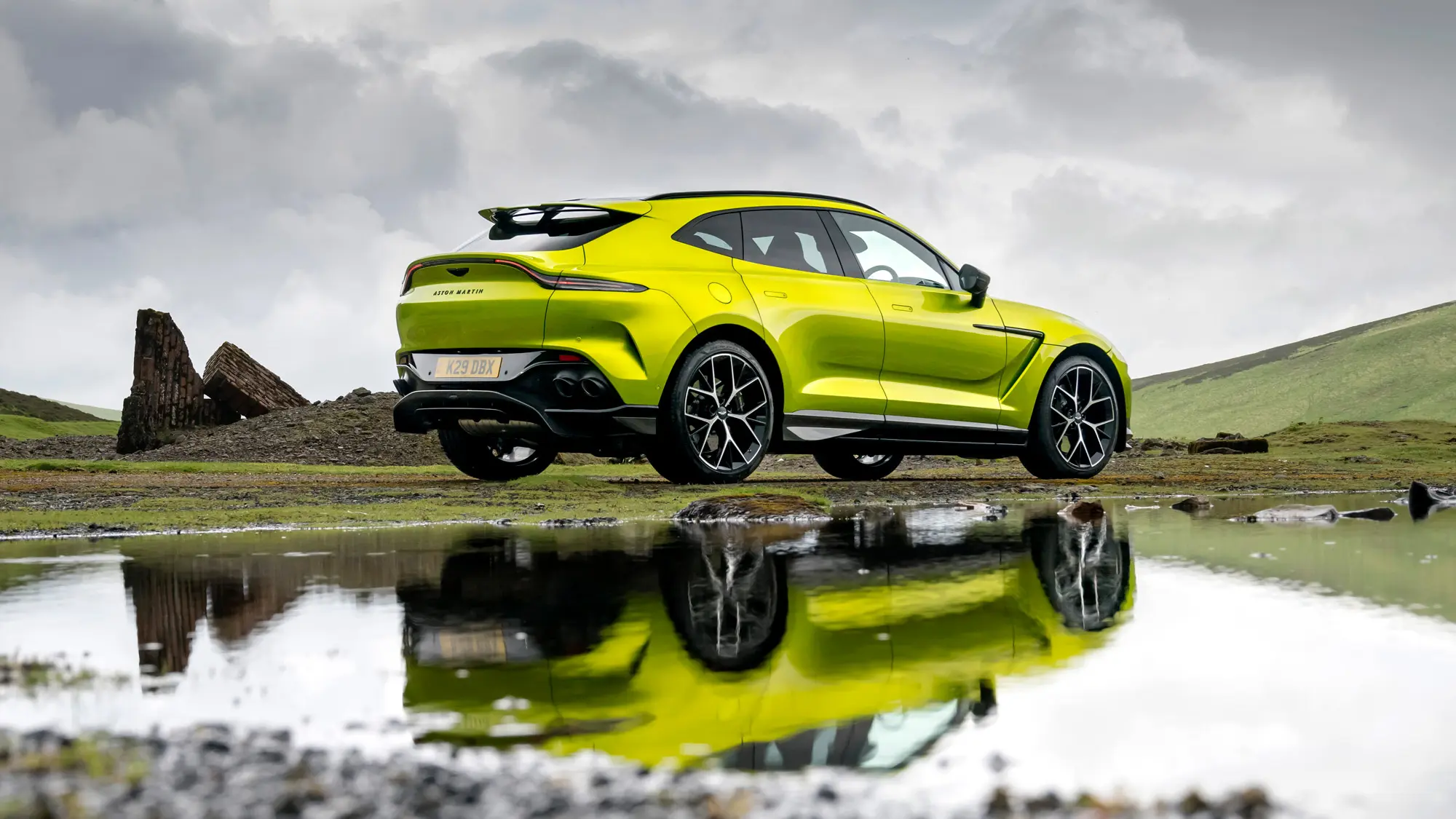
For those who recall it, the Rapide was a bold but less practical attempt. Built in St Athan, Wales, the DBX was first launched in 2020 and underwent a facelift in mid-2024.
Previously, the DBX offered the 4.0-liter biturbo V8 engine sourced from Mercedes, producing 542 horsepower and 516 lb-ft of torque.
Following the facelift, however, the only available option is the more powerful DBX707, which delivers a remarkable 697 horsepower (707PS) and 663 lb-ft of torque.
Since its arrival in 2022, the DBX707 has been the preferred model. Aston Martin reports that in the latter half of 2023, when both versions were still available, over 90% of orders were for the 707 model.
The DBX707 features upgraded turbos with additional cooling to achieve its immense power output. Aston proudly claimed it to be the world’s most powerful luxury SUV—until Ferrari released the 715-horsepower Purosangue.
While the facelift didn’t bring major mechanical changes, the DBX707 still retains the same engine and the Mercedes-made nine-speed automatic transmission.
Updates were made to the triple-chamber air springs and active dampers to improve body control. The exhaust system has also been adjusted to produce a more pronounced sound at lower RPMs.
Additionally, the DBX707 now provides slightly more steering assistance in GT mode for a more comfortable driving experience on highways. Aston Martin has also managed to shave off a tenth of a second from its 0-60 mph time, now down to 3.1 seconds.
You might be wondering if the facelift is a minor change. Visually, it doesn’t seem like much either.
Exterior updates include new wing mirrors that fold in the same unique manner as those on the DB12 and Vantage, a redesigned Aston Martin badge, and a reworked rear spoiler that no longer features the small carbon lip seen before. A few new paint colors were also introduced, but otherwise, the updates are subtle.
The core design remains an impressive achievement by Aston Martin’s design chief, Marek Reichman. The DBX stands out with its long bonnet, raked windshield, low roofline, and a rear end with a pinched ducktail inspired by the Vantage.
The side profile is muscular, with a long wheelbase and plenty of detailed touches. This design sets the DBX apart from competitors like Bentley and Rolls-Royce, who have struggled to achieve such balance in their SUV designs.
When the DBX707 was first released, it featured a larger grille at the front, a bigger rear diffuser, and a host of other detailed changes over the standard DBX.
5. Ferrari Purosangue
0-62mph: 3.3 seconds
Top speed: 192mph
With a name that’s as challenging to pronounce as it is to catch, the Ferrari Purosangue is the vehicle that many Ferrari enthusiasts never wanted to see, yet thousands of Ferrari customers around the globe had been eagerly anticipating.
Regardless of your opinion on the prancing horse logo gracing the front of an SUV, Ferrari has certainly crafted an exceptional model.
Ferrari has positioned the 715bhp 6.5-litre V12 engine toward the rear of the engine bay, improving weight distribution to achieve a near-perfect balance of 49 percent front and 51 percent rear.
This setup results in a driving experience unlike any other SUV. The Purosangue’s 0-62mph time of 3.3 seconds places it firmly among the fastest SUVs on the market.
Early spring is undoubtedly the perfect time to test the Ferrari Purosangue and truly evaluate how much practicality can be found in Ferrari’s “not-an-SUV” SUV.
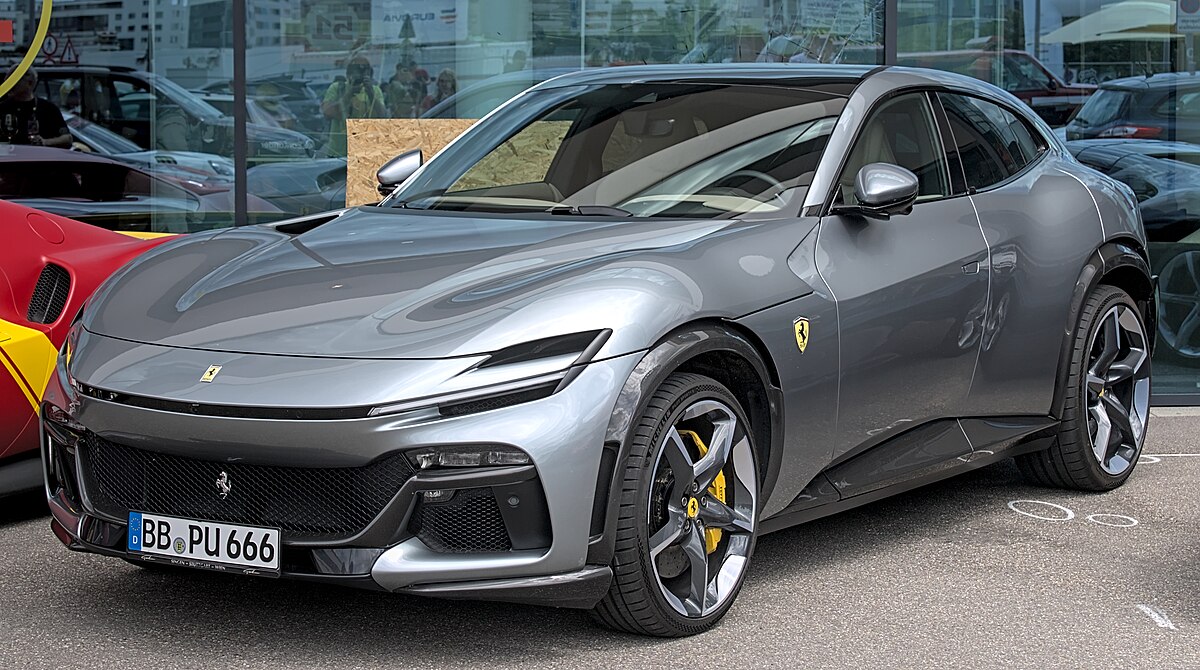
A skiing trip would be the ideal test—how does it drive, is there enough space, can it handle mountain passes, do the wheel controls ever make sense, and will it manage to achieve 20 mpg? Unfortunately, that adventure will have to wait another year, or possibly even longer if skiing is part of the equation.
The specifics of how, what, and why take a backseat when you’re behind the wheel of a Ferrari V12. When given the chance to drive such a car, you seize it for as long as possible, wherever you can. Harry was lucky I agreed to stop for some pictures.
Even with the V8 and the new V6 engines performing brilliantly, there’s something uniquely thrilling about a red Ferrari with a yellow prancing horse badge and twelve cylinders up front—or, in this case, crammed right up against the bulkhead. The excitement never fades. It’s one of the most intoxicating experiences you can have in a road car.
The 6.5-liter V12 engine would stand out in any situation, but when your day involves driving four-cylinder turbocharged cars and a very large electric vehicle, it feels absolutely dominant.
Climbing mountains on a forgettable launch route, there was a sense that the Purosangue might be held back by the lack of the twin-turbo torque that some competitors offer.
However, on smaller, more familiar roads, it doesn’t present any issues at all. The Ferrari feels explosively fast, even with the slightest opportunity to accelerate.
And if it ever feels a bit lacking in speed, the eight-speed dual-clutch transmission downshifts before you even have time to consider it. Any potential compromise is quickly forgotten in exchange for the opportunity to experience everything this engine has to offer.
Worst SUVs
For several years now, SUVs have claimed the top spot in the automotive market, becoming the most popular vehicle segment based on sales.
This surge in popularity can be attributed to the elevated seating position and the larger size these vehicles provide. Compared to an average sedan, SUVs offer a greater sense of safety and significantly more space for passengers and their belongings.
With the rise of SUV demand, the number of available models has increased drastically, making it more challenging to decide which brand and model to choose.
Additionally, figuring out which trim level suits your specific needs can be difficult, as there’s no such thing as a ‘one size fits all’ SUV. Almost every automaker has some form of an SUV in their lineup. Even Ferrari has succumbed to the trend with its Purosangue!
The sheer volume of available SUVs presents both advantages and disadvantages. The positive aspect is that finding a good one has become easier, while the downside is the overwhelming task of determining which one to buy.
However, if you steer clear of the models listed below, you should be in good shape. These are the SUVs that perform poorly in key areas like reliability, safety, and comfort. So, without further delay, here are the top worst SUVs.
Also Read: Top 12 High-Speed Diesel Cars of 2025 That Never Disappoint
1. 2023 Ford Explorer
The 2023 Ford Explorer takes the top spot on our list of the worst SUVs. Although the Explorer is one of America’s most famous models, the current generation fails to meet expectations, which is particularly disappointing considering Ford’s longstanding reputation.
The primary issue with the Explorer is its predicted reliability score of just 1/5, according to Consumer Reports.
Frequent problems include stalling and breakdowns, with many owners reporting that their Explorer required multiple repairs during their ownership.
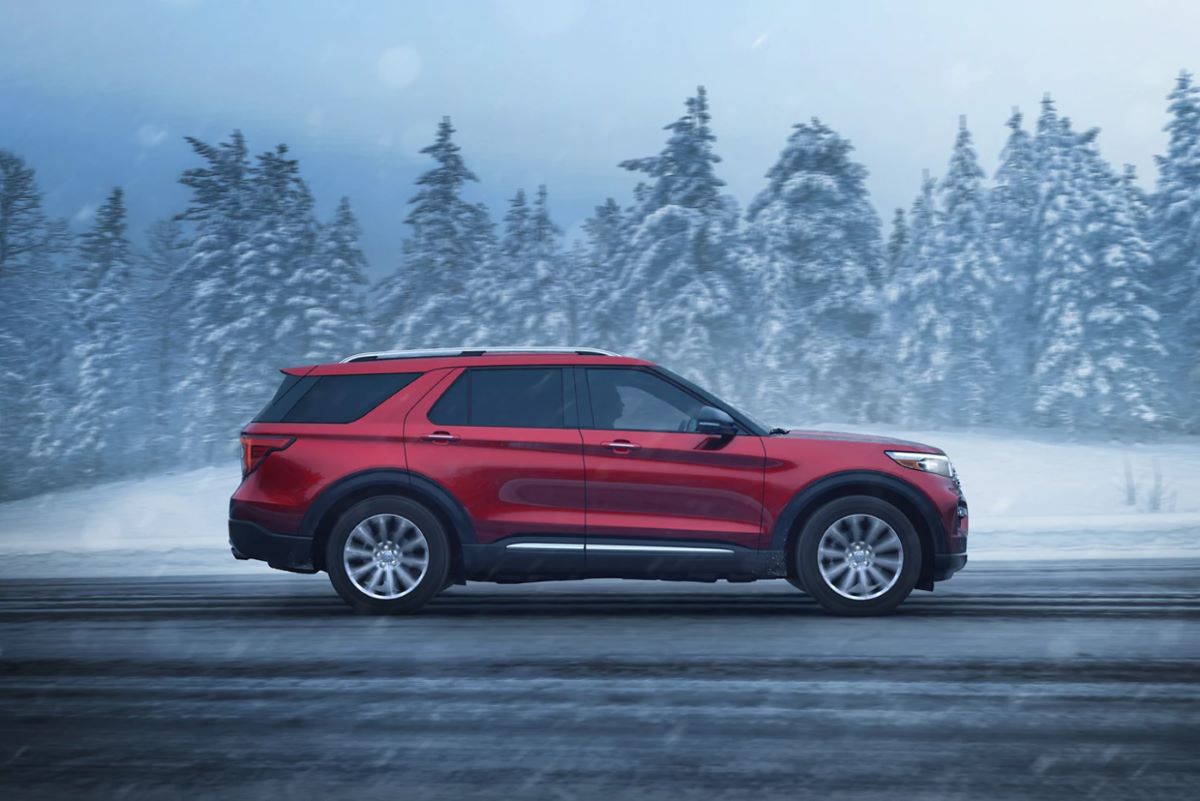
A common cause of stalling is a small oil leak, which has resulted in a recall due to the risk of engine fires. Excessive heat combined with combustible materials in the engine compartment can cause a fire.
As a result, it’s highly probable that you’ll face mechanical issues while owning this vehicle. The average yearly maintenance costs are $732, with estimated costs for the first 10 years totaling $9,017.
Additionally, the Explorer has experienced four recalls, including issues with the engine, powertrain, and backover prevention systems. The worst used Explorer year to buy is the 2016 model, which has a range of issues, including water leaks, suspension, transmission, and electronics problems.
2. 2023 Nissan Pathfinder
The 2023 Nissan Pathfinder is another SUV that makes this list, but its issues aren’t related to its design or handling. The Pathfinder’s exterior takes a more traditional approach, opting for a boxier appearance reminiscent of SUVs from the ’80s and ’90s.
The handling is crisp and precise, with minimal body roll, while the interior isn’t as luxurious as some competitors, though the SL package offers a more refined option. However, reliability is where the Pathfinder falls short, earning a 1/5 reliability rating for the 2023 model.
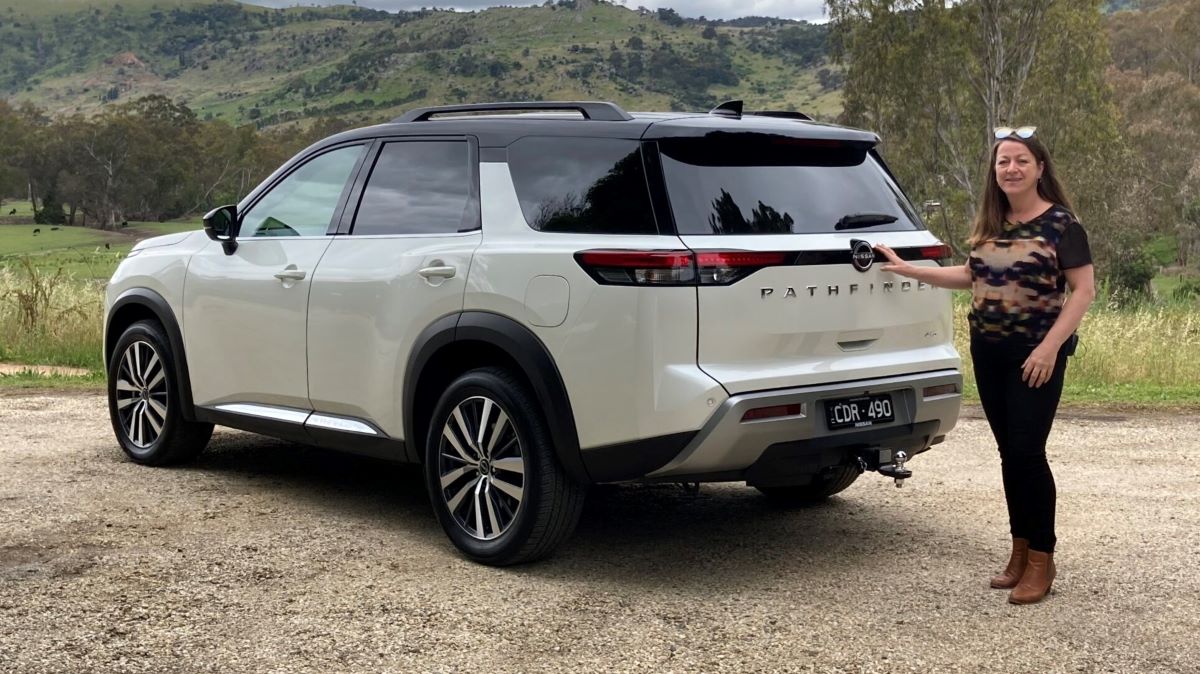
Owners have reported transmission or drivetrain problems, where the SUV stops moving forward entirely. Additionally, issues with electrical systems, in-car electronics, and malfunctioning control screens have been noted.
The average yearly maintenance costs for the Pathfinder are $542, with estimated 10-year maintenance costs of $7,558. The vehicle has one recall related to the seats.
The worst used year to buy is the 2015 Pathfinder, which has multiple issues with leaks, transmission, suspension, steering, engine cooling, and other essential systems.
3. 2023 Kia Sorento
The 2023 Kia Sorento is yet another mid-sized SUV that lands on our list of the worst SUVs of 2023. As one of the most popular segments in the auto industry right now, mid-sized SUVs like the Sorento are being heavily pushed by automakers globally.
The Kia Sorento offers a modern exterior, a comfortable ride, and plenty of power and performance, especially when it is functioning correctly.
However, reliability is where the Sorento falls short, as it has earned a predicted reliability rating of just 1/5 from Consumer Reports. The main issues reported by owners include problems with the forward collision warning system and the lane departure systems.
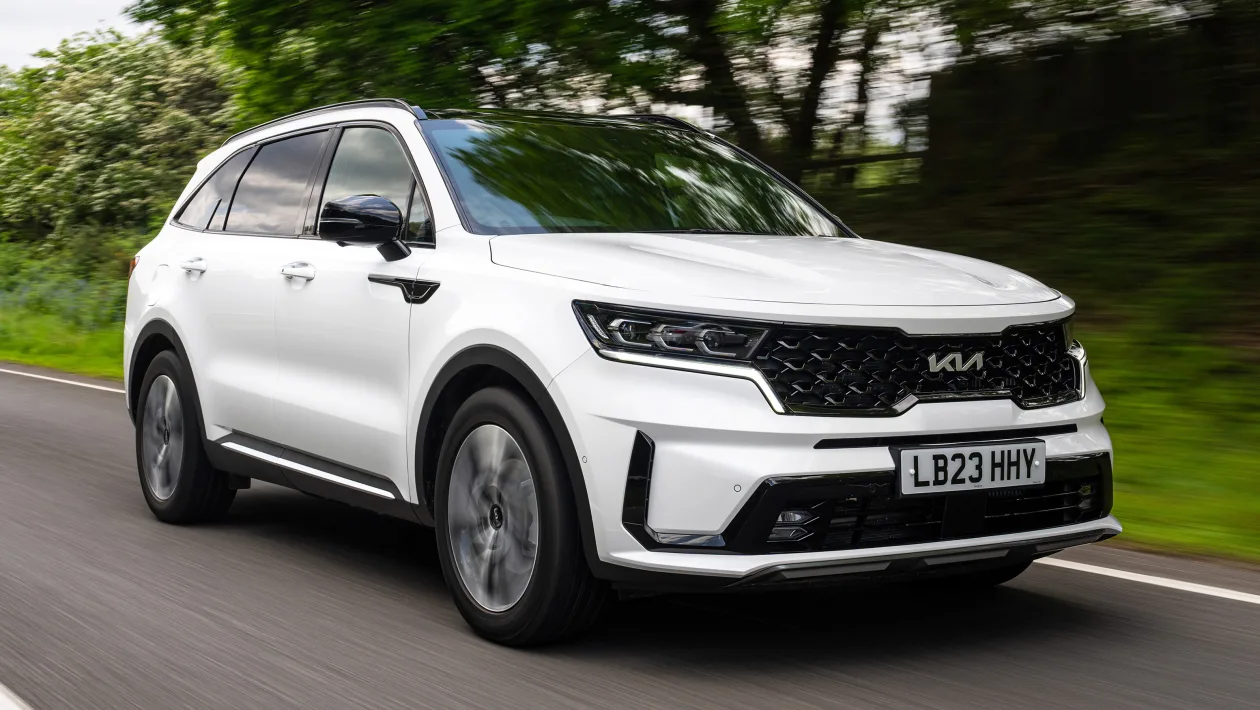
While these could theoretically be avoided with attentive driving, the lack of clear visibility while driving makes it difficult to address these issues. The Sorento has an average yearly maintenance cost of $533, and estimated maintenance costs over the first 10 years reach $7,953.
Additionally, it has three recalls, including backover prevention issues and problems with equipment and trailer hitches. The worst year to buy a used Sorento is the 2016 model, which has issues with the engine, power equipment, electrical system, and brakes.
4. 2023 Lincoln Aviator
The 2023 Lincoln Aviator, a modern mid-sized SUV, offers a high, commanding stance on the road, a sleek design with well-rounded curves, and impressive cornering ability.
Under the hood, it features a turbocharged 3.0-liter V-6 engine that accelerates the vehicle from 0 to 60 MPH in 5.4 seconds. For those seeking more power, the upper trim models offer added torque.
The Aviator’s interior lives up to the Lincoln brand’s reputation, offering a plush combination of leather, wood, and chrome. However, the Lincoln Aviator has earned a poor reliability rating of 1/5 from Consumer Reports, putting it on our list of worst SUVs for 2023.
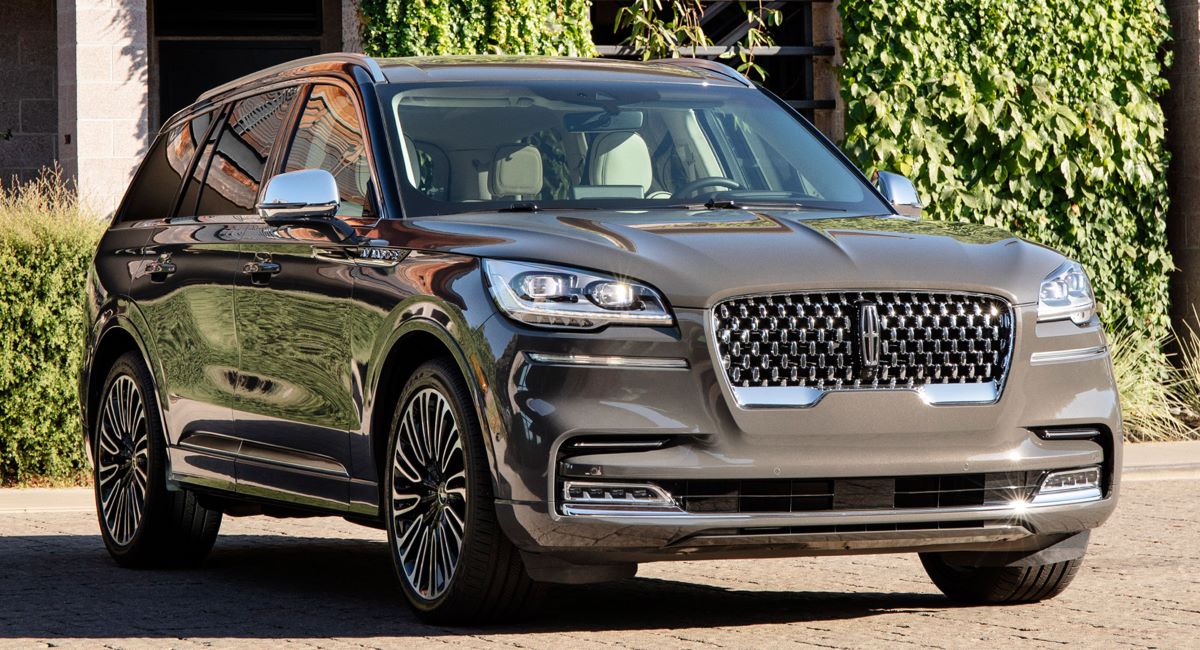
Common issues with this model include drivetrain problems, in-car electronics malfunctions, and the same paint and trim issues that have plagued previous Ford models.
The Aviator has an average yearly maintenance cost of $626, with estimated maintenance costs for the first 10 years totaling $11,691.
It has experienced five recalls, including issues with backover prevention, the powertrain, and seat belts. The worst year to buy a used Aviator is the 2021 model, which has problems with in-car electronics, the drive system, steering, suspension, leaks, and paint.
5. 2023 GMC Yukon
Finally, the 2023 GMC Yukon is another popular SUV that ranks poorly in terms of reliability, earning a predicted reliability rating of just 2/5 from Consumer Reports.
Despite its widespread presence on the streets, the Yukon suffers from a variety of issues that contribute to its low reliability score. As a high-priced vehicle, the Yukon can be costly to repair, especially given its frequent need for service.

This results in poor resale values and a significant loss of money for those who purchase it new. The average yearly maintenance cost for the Yukon is $747, with estimated maintenance costs for the first 10 years reaching $8,300.
It has experienced one recall related to exterior lighting, and the worst year to buy a used Yukon is the 2016 model, which has problems with the in-car electronics, climate system, suspension, transmission, engine, drive system, power equipment, paint, trim, body hardware, and electrical system.
The 2023 GMC Yukon is a large, three-row SUV designed to comfortably transport up to nine passengers.
With powerful engine options, including a turbocharged diesel engine and two available V8s, the Yukon excels in towing and hauling—areas where car-based crossovers may struggle.
For 2023, the Yukon Denali Ultimate package has become the top-tier trim level, featuring unique upholstery and interior trim to further distinguish it from the Chevrolet Tahoe, although the extensive list of features brings its price closer to the Cadillac Escalade.
The Yukon faces stiff competition in the full-size SUV market from the Ford Expedition, Jeep Wagoneer, Nissan Armada, and the redesigned Toyota Sequoia. For those needing even more space, the Yukon XL offers a much larger cargo area, though parking may be a concern.
The 2023 Yukon is known for its comfortable ride and quiet interior. It also boasts an impressive climate control system and optional 6.2-liter V8 that delivers robust power.
However, the Yukon is not without its drawbacks. It can be difficult to maneuver in parking lots and city streets, and the driver’s seat lacks adjustability. Its handling is somewhat ponderous, and it doesn’t offer much differentiation from the more affordable Chevrolet Tahoe.
Despite these cons, the Yukon remains an excellent choice for those who prioritize comfort and utility in a full-size SUV.
The 2023 Yukon continues to be part of the fifth generation, which was introduced in 2021. For those interested in purchasing, there are numerous listings available, including vehicles priced well below market value.
Whether you’re looking at the standard Denali or the larger Yukon XL, this vehicle offers a practical solution for families and those needing more cargo space, though it’s best to consider its maneuverability and handling when navigating tight spaces.
Also Read: Top 12 High-Speed Diesel Cars of 2025 That Never Disappoint

